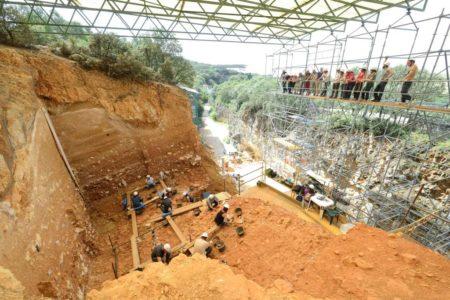The paleontological site of Atapuerca is one of the most important sites in Europe, as it gathers evidence of the presence of the Homo antecessor, the Homo heidelbergensis and the Homo neanderthalensis and their way of life. There is evidence of cannibalism, of funeral rituals and other discoveries which suggest the existence of a symbolic way of thinking. All these make Atapuerca special.
The guided tour of the Sierra de Atapuerca takes place mainly in “La Trinchera del Ferrocarril” where different sediments of fossils have been found. The tour includes the visit of three sites: “la Sima de los Elefantes”, “El Complejo de la Galería and “la Gran Dolina”.The Archaeological Site of Atapuerca was declared a world Heritage Site by UNESCO in 2000.
The Experimental Archaeological Centre (CAREX) and The Museum of Human Evolution give us the chance to complete the visit to this unique place, the Rosetta Stone of human evolution in Europe.
The Experimental Archaeological Centre (CAREX) offers a different way of understanding human evolution. It is a Prehistoric interpretation centre where, through archaeological activities, we can understand what the day to day life of our ancestors was like: how they carved stone and made tools, how the hunted and lit fires. The visit to this Centre is an educational and fun walk through the daily life of the Palaeolithic, the Neolithic and the Bronze Age.
The visits to the Archaeological Site and Centre (CAREX) are guided visits either as a group or individually (trips, agencies, schools, etc.). These visits leave from the reception centres of Atapuerca and Ibeas de Juarros, and from the Museum of Human Evolution in Burgos. In addition, the sites, the Archaeological Park or the Museum of Human Evolution can be visited separately or together.



